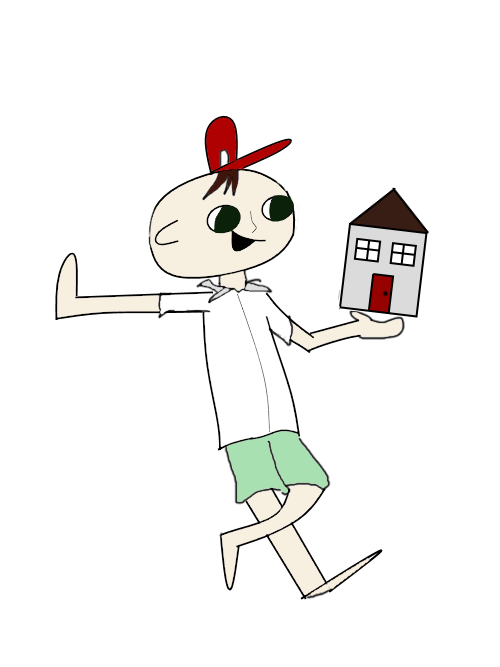So here you are, you have reviewed all your options and you have decided that it is important to your remodel to hire an architect. Now it is time to find an architect that is not only skilled in his craft, but he also needs to be a good fit for you and your project. In order to find the right man or woman for the job, you need to put in some legwork. It is essential that you interview potential candidates and evaluate them not only on their aptitude, but also take account of their communication skills, ability to listen to you, time availability and cost effectiveness compared to your project. The more time you spend finding the right contender for your job, the better the project will run for the both of you. It is important that your vision is understood by the architect and that you can both be proud of the result of your hard work. It is viable to understand your shared set of expectations so you can be clear on all the aspects of your partnership as you are moving forward.

Where do you find such an architect?
1. You can find local sources in home design magazines or design websites. The most familiar sites are angieslist.com, houzz.com or homeAdvisor.com They offer local lists of all the trades, and from there you can check out their websites or their work.
2. You can ask your handyman, plumber or electrician if they have worked with an architect they like. Many times they do work on job sites with an architect present, and they will have a unique perspective on how well the plans are drawn and how detailed the specifications were laid out and how well they could follow the instructions. However, one of the best places to find a good architect is your neighbors or friends. Word of mouth has been and will be the best way to find the person you are looking for. A get together or a party at a newly remodeled house will give you ample opportunity to check out the work first hand and ask question about the process.
3. Once you have identified a few candidates, be sure to look up their websites and look over their projects and design philosophy. You can learn a lot about a person by the way they present themselves to you online. You can also see if their style matches your vision. Pick two or three candidates and set up an in home interview to get to know them in person. Most architects will perform that service at no cost, as they will use the interview to make sure you are a good fit for them as well.

The interview
The interview will be your most important tool on how to gauge the compatibility of the two or three of you. I am saying three, because most likely you and your husband will make a team and it is very important that both of you communicate hopes, dreams, thoughts and vision to the potential candidate. The location of the interview can be either at the architects office or at your house, aka the jobsite. I prefer the later as it is much easier for me, the architect to see if there are potential pitfalls associated with your project. It also gives me an idea on how you live and how you will approach the project on your end. Remember, both parties will evaluate if they can work together.
Aside from feeling out each others visions, creativity and style of living, there are some rational questions that should be asked. It is very important to understand what you can expect form the architect. Your role and the role of the architect, along with everybody else’s need to be clearly defined, so there is no conflict later on.

Here are a few questions to ponder:
1. What can I expect in terms of process, procedures and presentation of ideas?
Typically, there is an established rhythm to every project, and most architects follow pretty much the same path. There is the initial consultation, the design phase where you exchange ideas over rough drawings that are then checked for compliance in the city. There is the finishing design phase, followed by construction drawings, structural design, permitting and start of project. The items most in question will be who does the choosing and purchasing of design elements, and how much jobsite supervision will be provided. (more on that later)
Here is an outline of what to expect while working with my firm
You also should find out how designs will be presented and in what format you will receive the drawings. Will there be 3D modeling, mood boards, picture files or shopping trips. For example, I provide picture files and mood boards for my initial design explorations. Most of the time, I also go on shopping trips and neighborhood expeditions, so we can see and discuss elements of houses we like together. Aside from the regular set of drawings, I sometimes built a model for visualization. I prefer that to the 3D renderings.
2. What is my responsibility in terms of choosing and purchasing design elements and fixtures? And what role does the architect play?
This role definition is very important, as these tasks can fall in very murky waters. If you want real clarity on this subject, I would hire a designer, or see if the architect firm also offers a design branch. A designer makes the interior phase of the project a lot easier and more efficient. But let’s say, your architect does a fair amount of interior space planning and design as well, then you need to firmly and clearly establish who does what.For instance, who purchases the appliances, who gathers specifications for the bought appliances and will the architect implement them in his design. So then the next question is, when do all these choices need to be presented. All these decisions are important, as a well drawn plan with detailed specification yields a much better bid from a contractor and a much better path to success. You may begin to understand that the foundation to happy building is laid right here in the initial design phase. For example, after I lay out the basic design plan and general space plan direction, I schedule the shopping trips. I take the clients to an appliance store, fixture store and tile store so we can establish a visual guide to where we need to go. To me, this is a very important step, as interior design may influence window and door settings, roof line etc. I design the outside with the inside in mind and vice versa.
3. Who will I be working with?
This is an important question. You may see the lead architect at the initial meeting for the first and last time. Your project then may be passed onto the junior designers and drafters. So when you are doing your evaluation of the person you meet in your interview, make sure that is the person you will be seeing throughout the project. Let’s say you do like the architect firm you are interviewing, and you are making your final choices, ask for another session where you get to meet and talk to the actual person that will be working with you on the project. For example, I chose to keep my architectural small, so I can personally oversee all projects. I love the creative interaction and the growing together with a client. So I am always the one who leads my projects.
4. How do you manage a project during construction?
Just a word to the wise, it is essential for the architect to stay involved with the project during the construction phase. Some architects will hand over drawings and disappear, or sometimes clients don’t see the need to pay the architect to stay on. Neither solution is at all advisable. You want an involved architect, because even the best plans create a lot of questions, revisions to on site situations and clarifications. You as a homeowner would not be equipped to answer all the challenges that arise, and a contractor will forge ahead the way he sees fit. A good team and team work are fundamental to a smooth building process and a happy end result. Often times during construction, new design ideas are opened up and presented, and with a solid team at hand, these changes can be implemented swiftly and at a low cost. You will want to have weekly job site meetings with your entire team present, and you will want to assure that the architect can be reached at all times when the contractor has questions. In the least, you want to make sure he is on site to ensure that all is being build according to plan. This way you can be reassured that the project will stay within the established timeline and the proposed budget.
5. What is your fee?
And how much is all that going to cost? That is a question that is of most important for many clients. Everything sounds wonderful and great, but can you even afford the architect? Some architects charge a flat fee based on the service they provide. The proposal will list a scope of work and a fee that accompanies it. Another method is to charge a percentage of the cost of the project. The range of the percentage is anywhere form 8%-15% for new construction and up to 20% for remodels. Some charge a combination of both. It is important to have a clear scope of work and a good understanding what you are getting for the fee. Sometimes, drafters are paid separately, but most often other required professionals, mainly engineers, soils reports and Title 24 are billed separately. For example, I charge a flat fee based on the project.
6. Are you licensed?
Some cities require a licesed architect to be the one to create the plans. If you need to hire a licenesed professional, you can check the American Institure of Architect (AIA) for current license standing. If not, an architectural designer will serve you just as well.

It is important that you prepare for this interview and take the time to go through this process.
You will be spending a good amount of time together with the architect, talking, sharing visions and working towards a design goal that works for the both of you. An architect is proud of his individual design skill and they they carry their own visions with them into your project. You want to make sure you are in line with each other.

Happy Building
Call for a virtual consultation and we can discuss your project in more detail and identify a plan moving forward.
[consult_button]



Pingback: Homeowner’s guide on how to assemble a construction team – Stefani Conniff Design